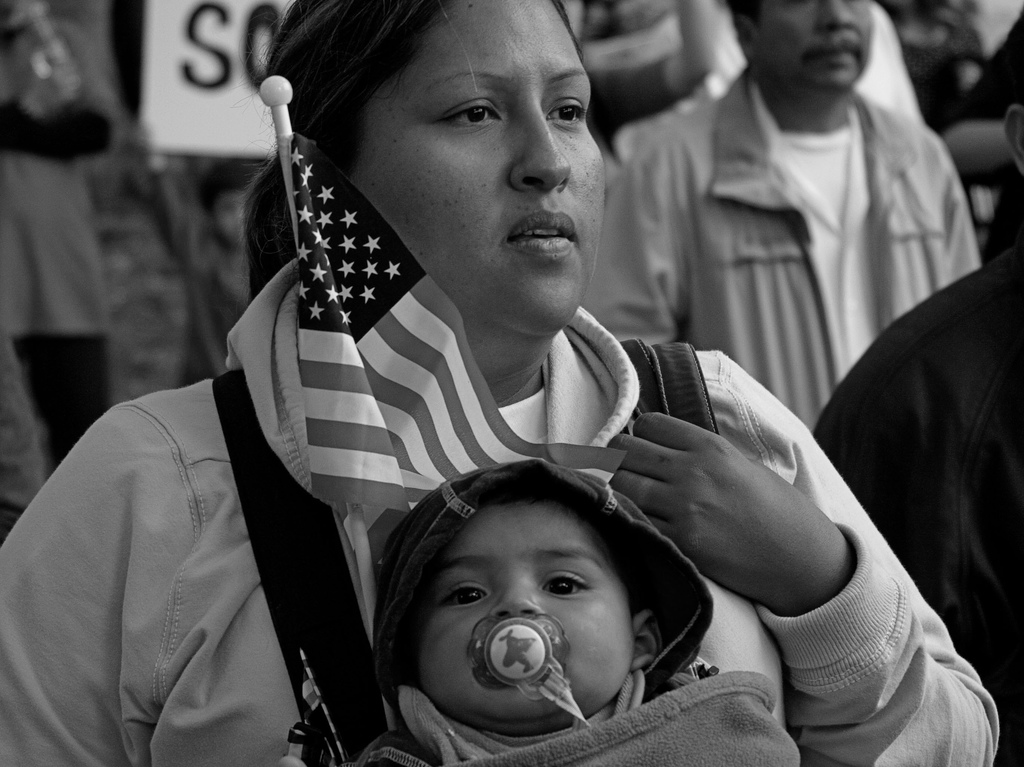When it comes to understanding the relationship between immigration and crime, anecdotes are no substitute for evidence. And, as a new report from the American Immigration Council explains, the evidence has been clear for more than a century: high rates of immigration are associated with lower crime rates, and immigrants are less likely to commit serious crimes or be behind bars than the native-born. This holds true for both legal immigrants and the unauthorized, regardless of their country of origin or level of education. In other words, the overwhelming majority of immigrants are not “criminals” by any commonly accepted definition of the term.
Consider the following data presented in the report:
Higher Immigration is Associated with Lower Crime Rates
- Between 1990 and 2013, the foreign-born share of the U.S. population grew from 7.9 percent to 13.1 percent and the number of unauthorized immigrants more than tripled from 3.5 million to 11.2 million.
- During the same period, FBI data indicate that the violent crime rate declined 48 percent—which included falling rates of aggravated assault, robbery, rape, and murder. Likewise, the property crime rate fell 41 percent, including declining rates of motor vehicle theft, larceny/robbery, and burglary.
Immigrants are Less Likely than the Native-Born to Be Behind Bars
- According to an original analysis of data from the 2010 American Community Survey (ACS) conducted by the authors of this report, roughly 1.6 percent of immigrant males age 18-39 are incarcerated, compared to 3.3 percent of the native-born. This disparity in incarceration rates has existed for decades, as evidenced by data from the 1980, 1990, and 2000 decennial censuses. In each of those years, the incarceration rates of the native-born were anywhere from two to five times higher than that of immigrants.
- The 2010 Census data reveals that incarceration rates among the young, less-educated Mexican, Salvadoran, and Guatemalan men who make up the bulk of the unauthorized population are significantly lower than the incarceration rate among native-born young men without a high-school diploma. In 2010, less-educated native-born men age 18-39 had an incarceration rate of 10.7 percent—more than triple the 2.8 percent rate among foreign-born Mexican men, and five times greater than the 1.7 percent rate among foreign-born Salvadoran and Guatemalan men.
Immigrants are Less Likely Than the Native-Born to Engage in Criminal Behavior
- A variety of different studies using different methodologies have found that immigrants are less likely than the native-born to engage in either violent or nonviolent “antisocial” behaviors; that immigrants are less likely than the native-born to be repeat offenders among “high risk” adolescents; and that immigrant youth who were students in U.S. middle and high schools in the mid-1990s and are now young adults have among the lowest delinquency rates of all young people.
In light of this evidence, it should come as no surprise that harsh immigration policies are not effective in fighting crime. Unfortunately, many U.S. policymakers ignore the evidence and succumb to their fears and prejudices about what they imagine immigrants to be. As a result, far too many immigration policies are drafted on the basis of stereotypes rather than substance. These laws are criminalizing an ever broadening swath of the immigrant population by applying a double standard when it comes to the consequences for criminal behavior. Immigrants who experience even the slightest brush with the criminal justice system, such as being convicted of a misdemeanor, can find themselves subject to detention for an undetermined period, after which they are expelled from the country and barred from returning.
Put differently, the federal government has for years been redefining what it means to be a “criminal alien,” using increasingly stringent definitions and standards of “criminality” that do not apply to U.S. citizens. Whole new classes of “felonies” have been created which apply only to immigrants, deportation has become a punishment for even minor offenses, and policies aimed at trying to end unauthorized immigration have been made more punitive rather than more rational and practical. In short, immigrants themselves are being criminalized.
And yet, as the findings of this report make clear, the majority of deportations carried out in the United States each year do not actually target “criminals” in any meaningful sense of the word.
Photo by Michael Righi.
FILED UNDER: featured


